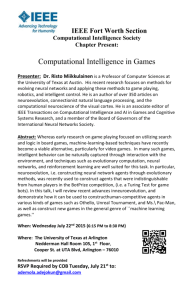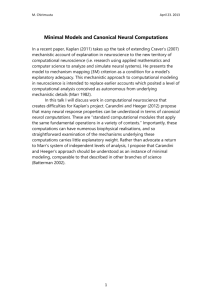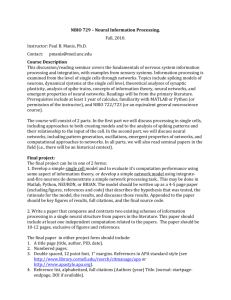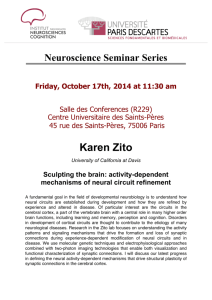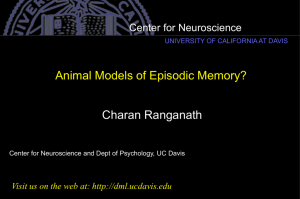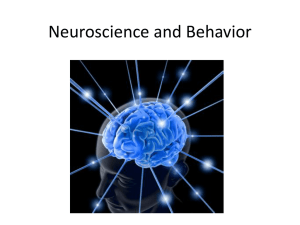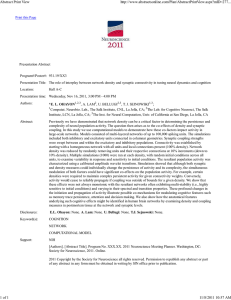Syllabus: Phys 597B, Computational Neuroscience
advertisement
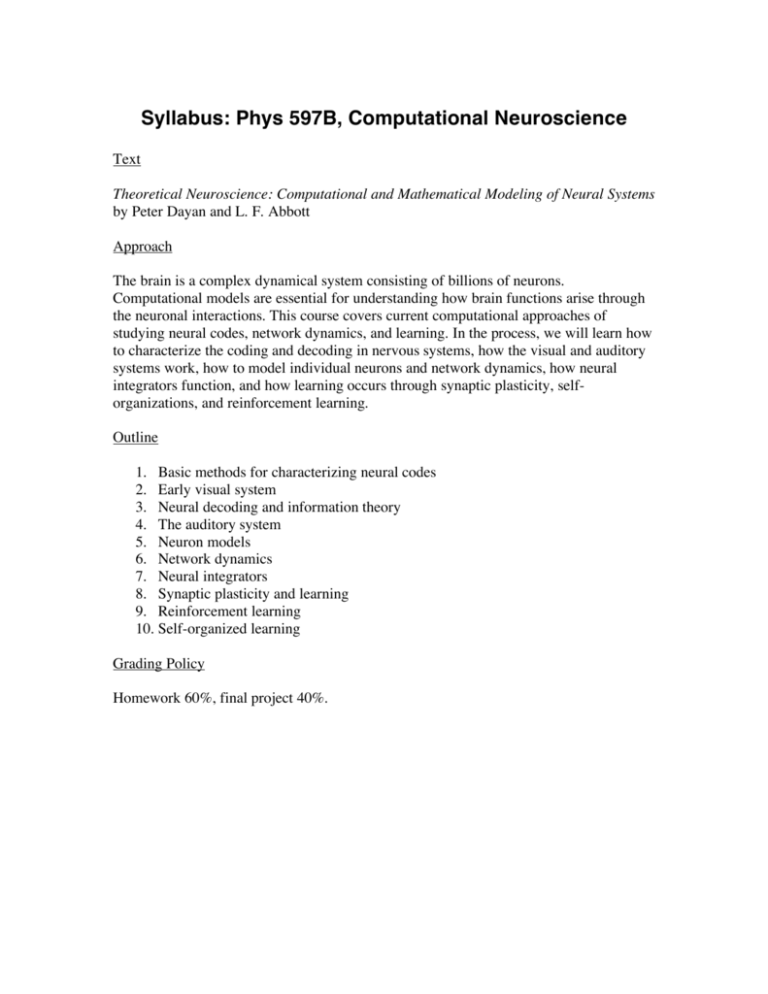
Syllabus: Phys 597B, Computational Neuroscience Text Theoretical Neuroscience: Computational and Mathematical Modeling of Neural Systems by Peter Dayan and L. F. Abbott Approach The brain is a complex dynamical system consisting of billions of neurons. Computational models are essential for understanding how brain functions arise through the neuronal interactions. This course covers current computational approaches of studying neural codes, network dynamics, and learning. In the process, we will learn how to characterize the coding and decoding in nervous systems, how the visual and auditory systems work, how to model individual neurons and network dynamics, how neural integrators function, and how learning occurs through synaptic plasticity, selforganizations, and reinforcement learning. Outline 1. Basic methods for characterizing neural codes 2. Early visual system 3. Neural decoding and information theory 4. The auditory system 5. Neuron models 6. Network dynamics 7. Neural integrators 8. Synaptic plasticity and learning 9. Reinforcement learning 10. Self-organized learning Grading Policy Homework 60%, final project 40%.
